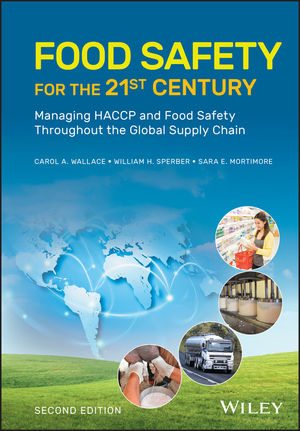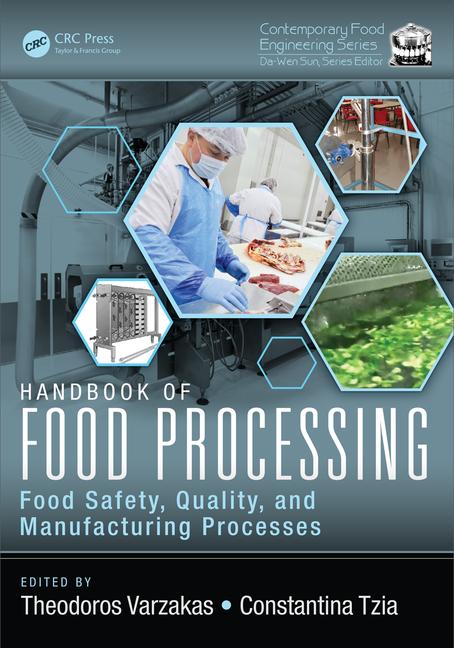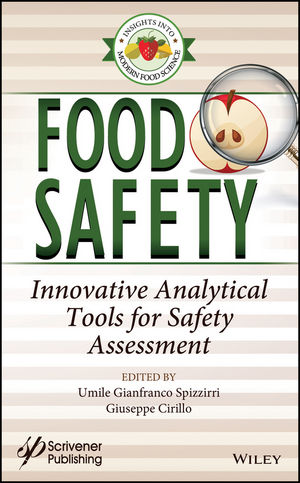Food Packaging: Supplying Safety

Federal perspective on food safety shifted in January 2011, when the Food Safety Modernization Act (FSMA) was made law and the U.S. government’s strategy became preventing, rather than responding to, contamination issues. The law required an updated food recall search engine with greater detail and a more user-friendly format than its predecessor’s.
With assistance from their machinery and materials suppliers, consumer goods packagers have responded quickly to the new regulations, in part with the suppliers’ aid.
Find Trouble Before It Starts
“Contamination threats exist in each step of the food chain,” explains a Packaging Machinery Manufacturers Institute (PMMI) member. “This means there is more pressure than ever before on the food industry and its suppliers to put systems, programs and methodologies in place that will elevate the safety of the nation’s food supply to an ever higher level.”
Product inspection technology controls underfill and overfill, analyzes and measures various food constituents or detects contaminants in packaged, bulk and piped food and pharmaceutical products.
“We help protect brands and keep processing and packaging operations running smoothly using accurate checkweighers, sensitive metal detectors, high-performing X-ray systems and efficient in-line food analyzers. This puts us in an ideal position to partner with food processors to deliver technology that will help them meet their safety objectives.”
Innovation allows food companies equipping their operations with state-of-the-art product processing and inspection instruments to minimize safety risks and optimize production, encouraging a thorough review of each customer’s product inspection capabilities to consider requirements in the following equipment/instrument categories:
• Physical contaminant and quality control inspection
• Irradiation measurement
• Viscosity, elasticity, processability and temperature
• In-line product constituent analysis
• Ingredient verification, especially on machinery that handles known allergens
On the equipment manufacturing side of the fence, it is incumbent upon companies to design and manufacture equipment that helps minimize bacterial contamination by:
• Facilitating sanitation
• Eliminating nooks and crannies where bacteria can escape detection and sanitation
• Incorporating components that prevent bacteria from growing
• Designing machinery that is very robust and can survive frequent treatment with cleaning chemicals and high-pressure/-temperature water
Further, equipment manufacturers need to work more closely than ever with their customers to understand their customers’ food safety concerns and initiatives. “It is going to take a concerted effort by all in the supply chain to make sure that the latest safety objectives are met,” the supplier concludes.
Giving Products the Green Light
One packaging supplier was ahead of the mandate, introducing an automated system for measuring bacterial aerobic plate count (APC) that targets meat, seafood, dairy and produce companies and labs with high-throughput requirements.
Such systems were developed to provide precise, same-day results, more than six times faster than traditional methods. Because of these shorter testing cycles, packers and processors can get their perishable food items to consumers with the same assurance of product safety.
They also provide an APC or total viable count of a food sample’s microbial load using a sensing assay or vial. As bacteria in the test sample multiply and respire, they consume oxygen. The change in oxygen is used to calculate the original sample’s colony forming units per gram for solids or per milliliter for liquids.
Building in Sanitation
Maintaining immaculate sanitation inside the processing and packaging plant is paramount. Bacteria and contaminants can enter a food facility in multiple ways that could have picked up the contaminants from the farm field, livestock or poultry operation or in distribution.
Weighing and conveying equipment can be built to make fastidious cleanliness inside the plant an achievable reality. Packaging equipment can be designed and built to eliminate harbors for bacteria, allow for thorough sanitation with minimal labor, simplify sanitation with product contact parts that can be removed without tools, eliminate areas where water and product particles can pool and meet or exceed U.S. Department of Agriculture (USDA), USDA-Dairy or Wisconsin Dairy Products Association requirements.
Examples of sanitary features on weighing and conveying equipment can include the following:
• Conveyors, belts and rollers that can be removed without tools
• Wash-down construction and product contact parts that can be removed by hand
• Horizontal motion conveyors that use a one-piece welded stainless steel pan, slide gates that can be removed without tools and a drive cover that sheds water
• Plastic belt conveyors with pivot-open side guides and crumb trays that allow complete access for sanitation
• Clean-in-place sprays available on plastic belt and bucket conveyors
• Tray and carton fillers with wash-down construction and product contact parts that can be removed by hand
• Tray sealers designed to shed water and feature product contact parts that can be disassembled without using tools
• Sanitary packaging platforms built to eliminate flat frame surfaces where debris and moisture can accumulate
Mislabeling Causes Problems, Even Recalls
Mislabeling violates U.S. Food and Drug Administration regulations and mandates a recall of the packaged product. Research done by the USDA’s Food Safety and Inspection Service found that 43 percent of food recalls were required because of mislabeled products.
Because of mislabeling recalls, most companies have established automated inspection regimens. These systems are able to detect defects, nearly eliminating the possibility of defective products and incorrect packaging reaching the customer.
Label mix-up errors can include placing the wrong label on a product, mismatched front and rear labels and incorrect product information on the label. When label mix-ups occur on a production line, they compromise product integrity, brand reputation and company profits, and pose a risk to the consumer. The opportunities for label mix-ups on the factory floor are numerous and encompass many different factors, including unintentional human error and ineffective line changeovers.
Packaging companies are responding to new mandates to prevent any contam-ination or misinformation before the product ever reaches the supply chain. Machinery manufacturers are doing their part to make it possible.
PMMI holds PACK EXPO each year, where processors and packagers can find these and other innovations to support their food safety efforts. PACK EXPO International 2012 will be held October 28–31 at McCormick Place, Chicago.
Looking for a reprint of this article?
From high-res PDFs to custom plaques, order your copy today!








